In the street
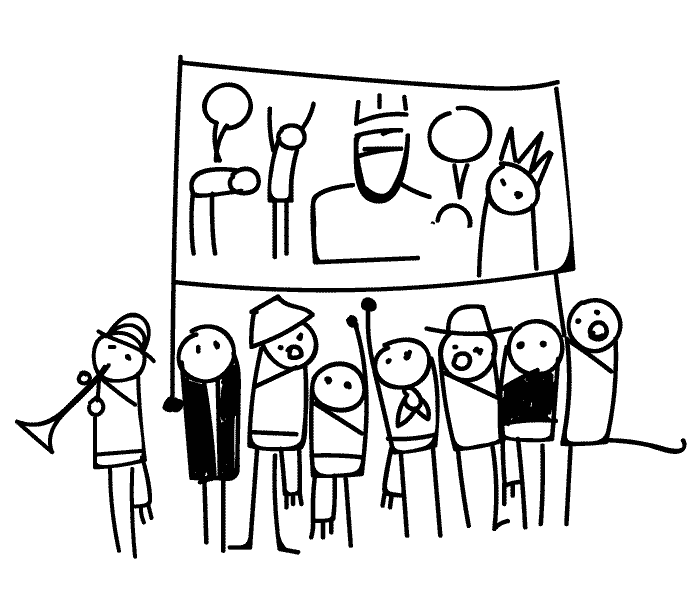
Comparsa of giants and bigheads
A unique comparsa of giants and big-heads, with almost 100 members and more than 150 years of history.
The march of the troupe of giants and bigheads is one the most popular events of the Sanfermines. 4 pairs of giants, 5 bigheads, 6 kilikis and 6 zaldikos, all made of papier-mache, give life to the streets of Pamplona in the evening of 6th July and the mornings of 7th to 14th July.
The giants
The giants go through the streets to the sound of traditional parade music. Each giant dances to a band of bagpipe players and the last one, which is always the American queen, dances to flute players.
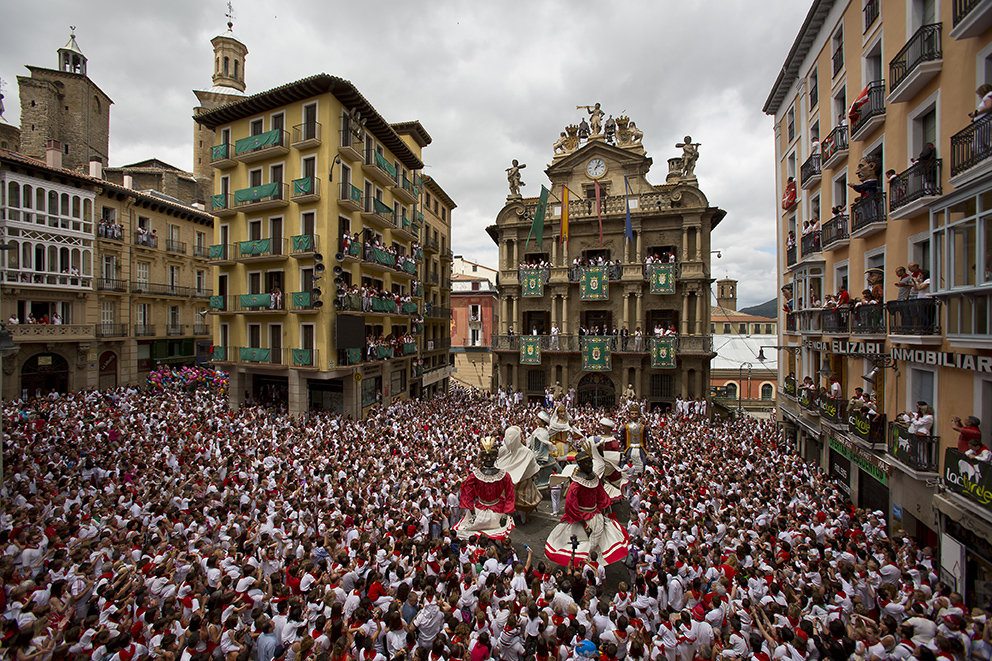
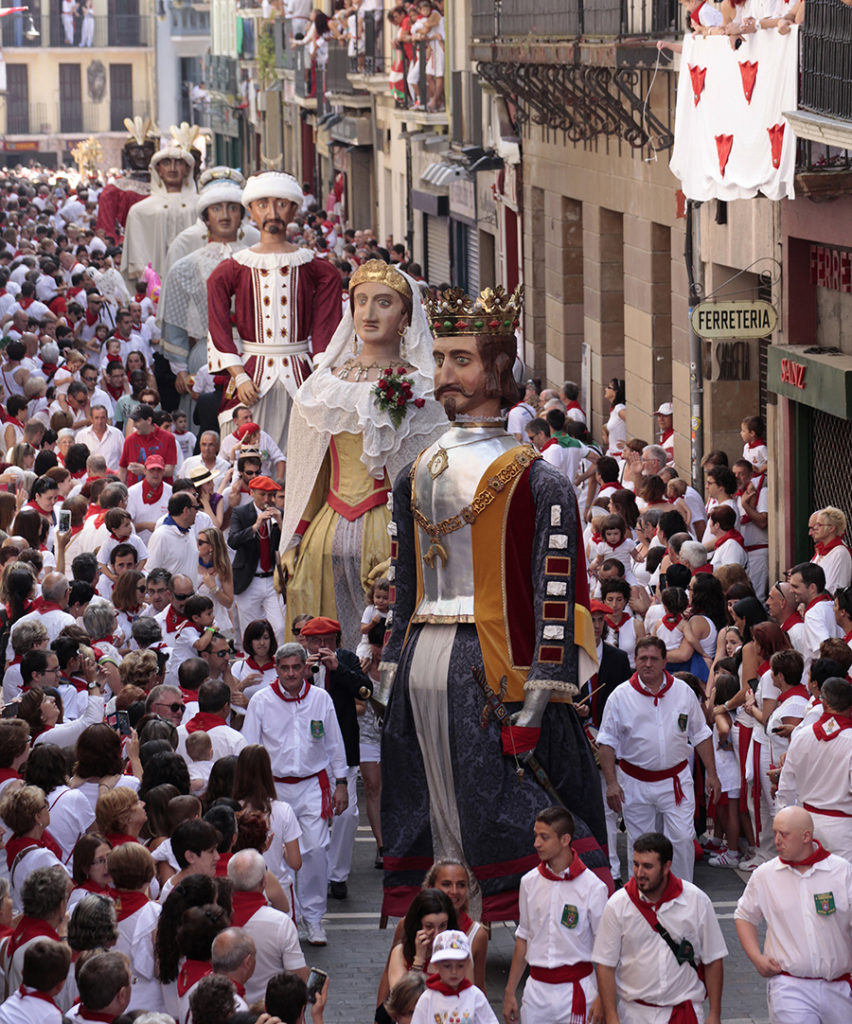
They consist of 8 figures created in 1860 by Tadeo Amorena, and represent four pairs of kings and queens: European, Asian, African and Afro-American. They measure between 3.85 and 3.90 metres, reaching up to 4.20 when the carrier is inside. The weight ranges between 55.8 and 62.5 kilos, although the biggest drawback when carrying them is not the weight, but how it is distributed and the resistance they make to factors such as wind.
The bigheads
There are five bigheads, made by Felix Flores in 1890. Despite their large heads of more than one meter in height, more than two meters in circumference and 14 kilos each, their only task is to walk and precede the giants, shaking hands with the children. Their names are Alcalde, Concejal, Abuela, Japones and Japonesa.
The Kilikis
The Kilikis are most feared by the kids, as their function is to hit the children with soft foam-rubber truncheons. The kilikis weight between 10 and 13 kilos and are called Caravinagre, Verrugas, Napoleon, Patata, Coletas and Barbas.
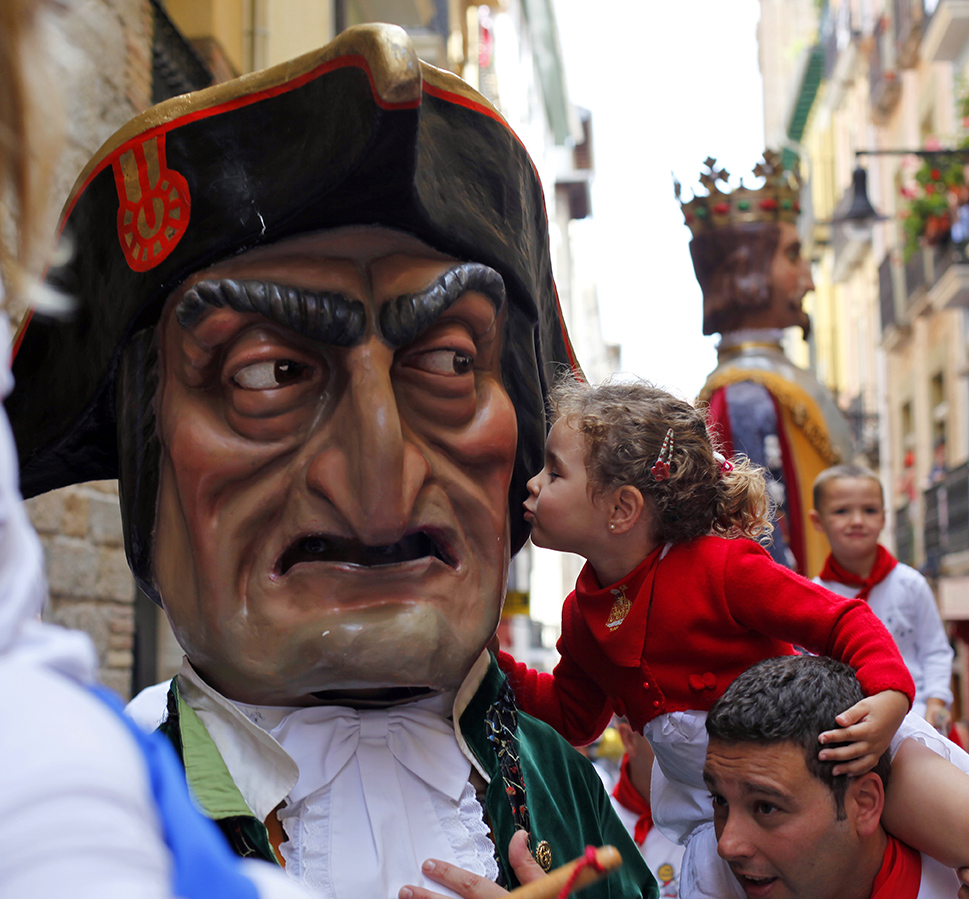
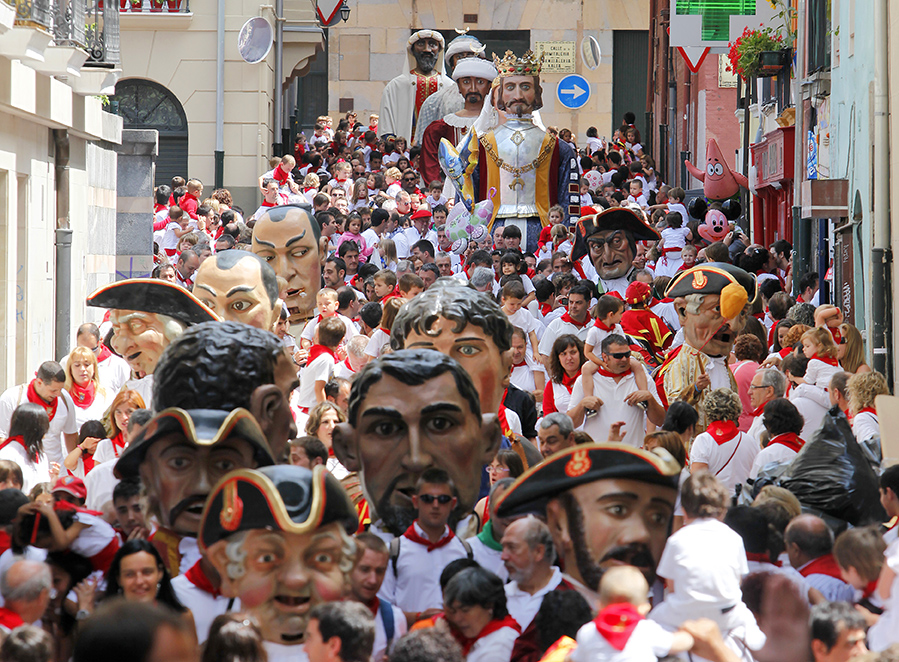
Little horses
The zaldikos (“little horses” in Basque), are 6 horses with their riders and just like the kilikis, they hit people with foam rubber truncheons. They exceed 30 kilograms in weight and have no name, they are simply numbered from one to six.
On the last day of the fiestas, the troupe takes on a special role. Firstly with the dance of honour of the giants in the Plaza Consistorial, and then with the traditional act called the “despedida” or farewell, also next to the City Hall.
The crags
They arise from gangs that met in the nineteenth century to go to the bulls and in the twentieth century were organized in an associative form and have hundreds of members. Their names usually refer to districts of the city or sports clubs.
Las peñas son una parte importante de las fiestas en la calle. The peas or social clubs are an important part of the fiestas in the street. The fiestas of San Fermin have 17 peas, 16 from Pamplona and one from Ansoain. They are groups of friends who have their own headquarters, distinctive symbols (banners, shields, colours and shirts) and a packed programme for the fiestas of San Fermin.
The Peñas organise a lot of events at their headquarters, but the one that most attracts people’s attention is the marches they organise at the end of each corrida, where they fill the streets of Pamplona with music and fun. They also create a show in parallel with the corridas in the bullring.
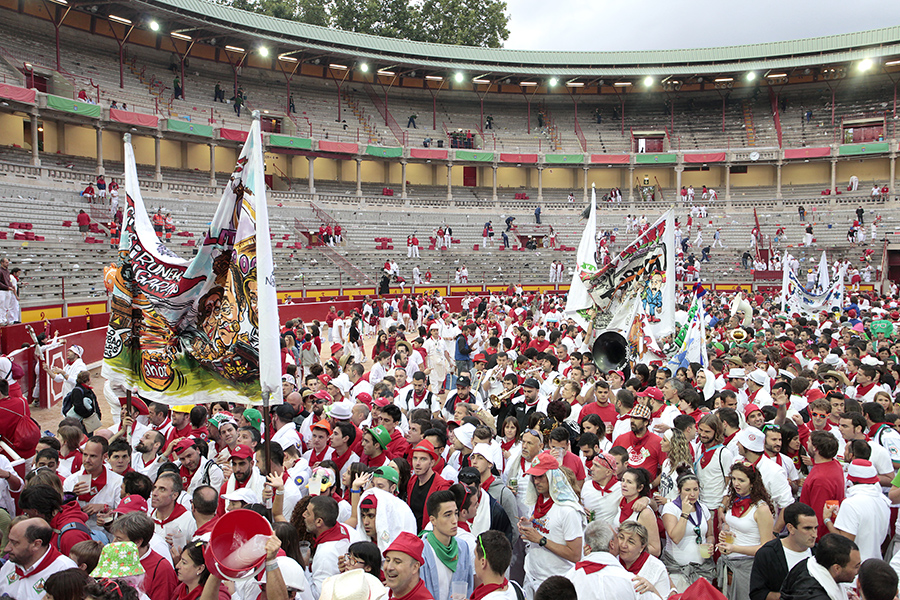
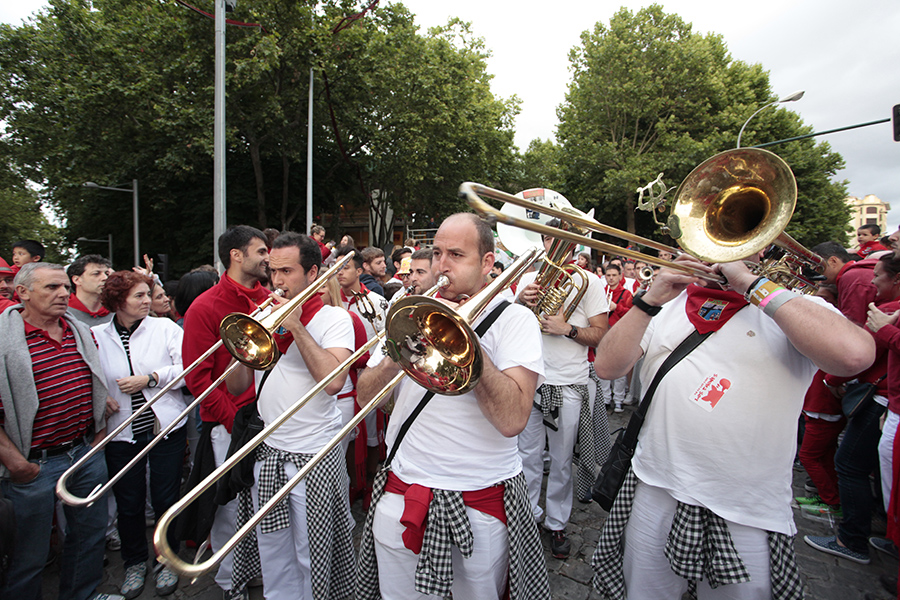
Members of the peas fill up the unshaded side of the ring, while their bands give further life to the event. The Monumental de Pamplona bullring is unique in this regard for not being reigned by the sepulchral silence that is common to many bullrings. The peas take their place above the pens and occupy part of the terraces 5, 6 and 7. In the andanada (the highest part of the ring), the pea membe rs occupy sections 11, 12 and 13, and in the seating area, they take up sections 6 and 7.
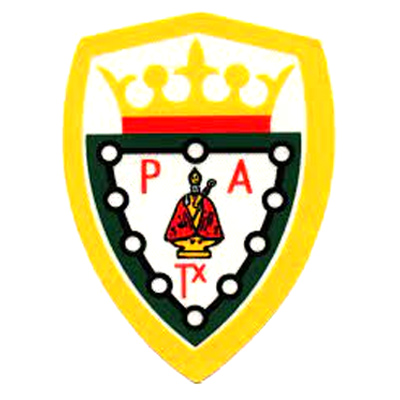
Armonía Txantreana(1956)
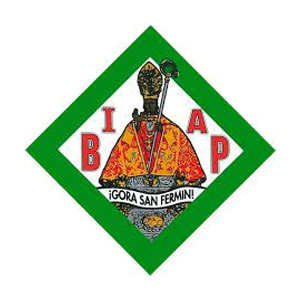
El Bullicio Pamplonés (1932)
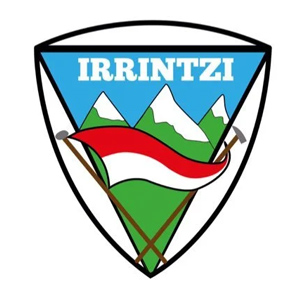
S.C.D.R. Irrintzi (1951)
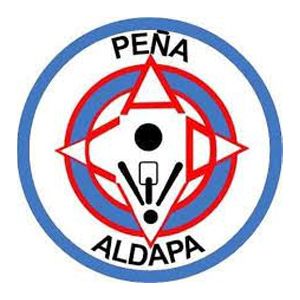
Aldapa (1947)
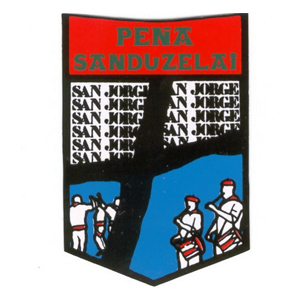
Sanduzelai (1980)
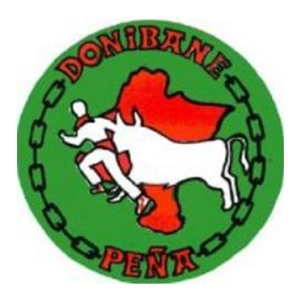
Donibane (1978)
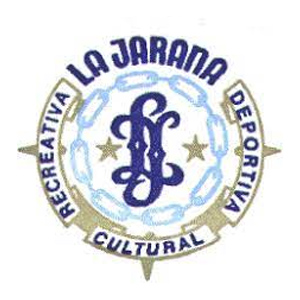
S.D.R.C. La Jarana (1940)
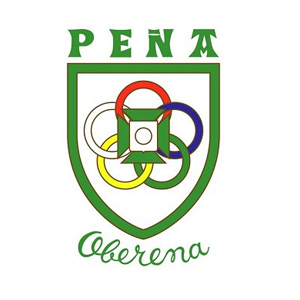
Oberena (1941)
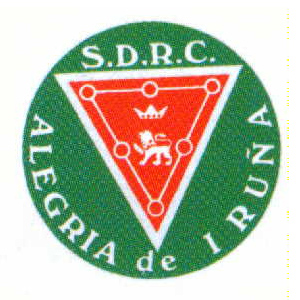
Alegría de Iruña (1953)
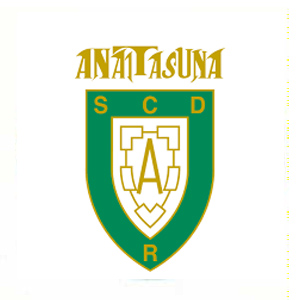
Anaitasuna (1949)
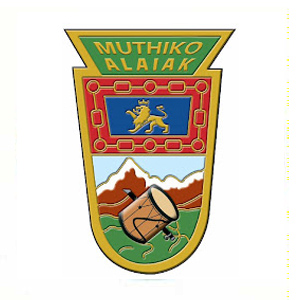
S.C. Muthiko Alaiak (1931)
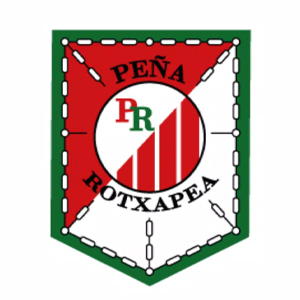
Rotxapea (1978)
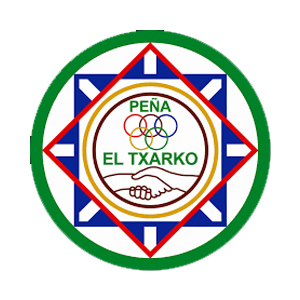
El Charco (1977)
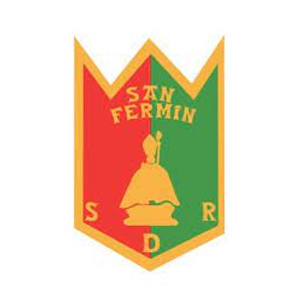
7 de Julio San Fermín (1971)
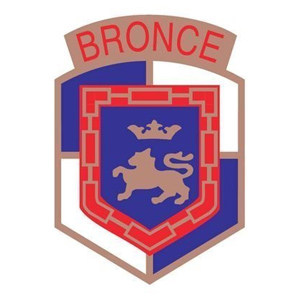
Los de Bronce (1950)
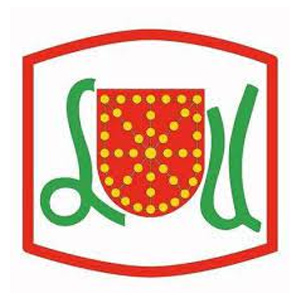
La Única (1903)
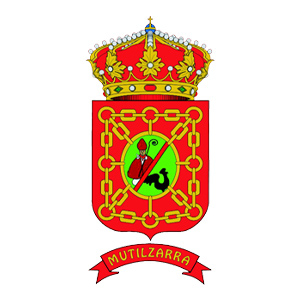
Mutilzarra (1992)
La pamplonesa and the dianas (fanfare)
La Pamplonesa, a band without equal that, among many other things, plays the dianas, 4 scores that accompany the people from 6:45 in the morning in an atmosphere of dance and sense of humor.
The band known as La Pamplonesa was created in 1920 after Silvanio Cervantes, Manuel Zugarrondo, and Vicente Sadaba expressed to the Town Council the advisability of forming a civil band for the city, as the bands previously in charge of providing the music during the San Fermin festival were military bands that were not popular with the public. This lack of connection between the citizens and the bands led by the military was the reason for their disappearance in 1917.
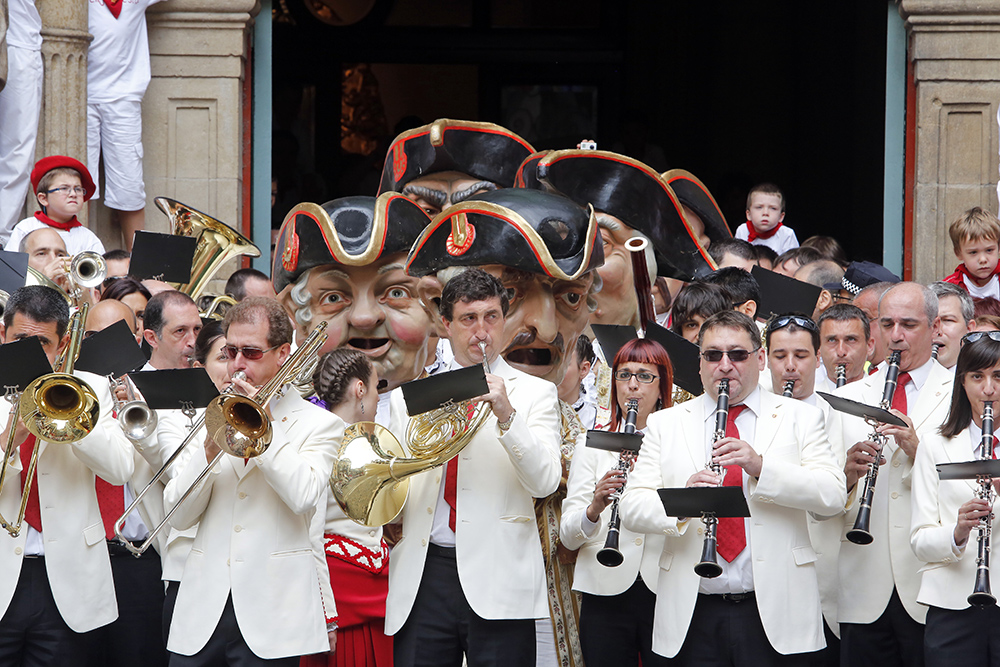
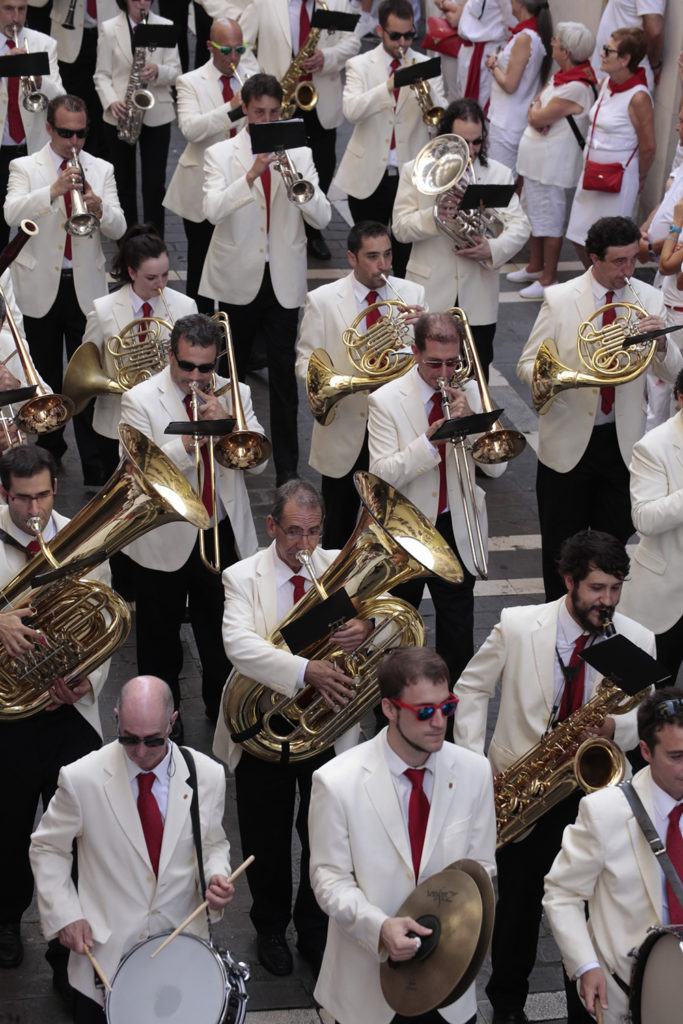
Its task is to provide music for the corporation at whatever official corporate events are held and at the bullring; it is also in charge of playing the dianas before the encierrro each morning.
Nowadays La Pamplonesa is totally integrated as part of the festival and enjoys the affection of the people. This is shown by Las Dianas when the complicity between the band and the public creates that special atmosphere which makes it simply unique.
Every morning at 6:45 from the Plaza del Ayuntamiento the town band “La Pamplonesa” parades through the streets playing Las Dianas, a total of four songs in any order and practically continuously which are chanted by a multitude of people who accompany the band along its route to create a very special atmosphere of dancing and jokes and a lot of good humour.
If as people say in Pamplona the San Fermin Festival is the sum of all the unique, magic, or surprising moments that arise during it, whether you find them or they find you, there is no doubt that Las Dianas provide one of the most special ones.
The starting time and the place make that for a few minutes and under the enveloping color of the first lights of the day, in the Town Hall square, the carpenters placing the fencing of the running of the bulls, the cleaning services cleaning the route, the people who have risen early to see the encierro, the people who have not yet finished the night… and “La Pamplonesa” with its music, all coincide at the same time in the same scene.
All this creates a most peculiar context in which humour is the main element and makes Las Dianas one of the most popular activities that is well loved by the people of Pamplona.
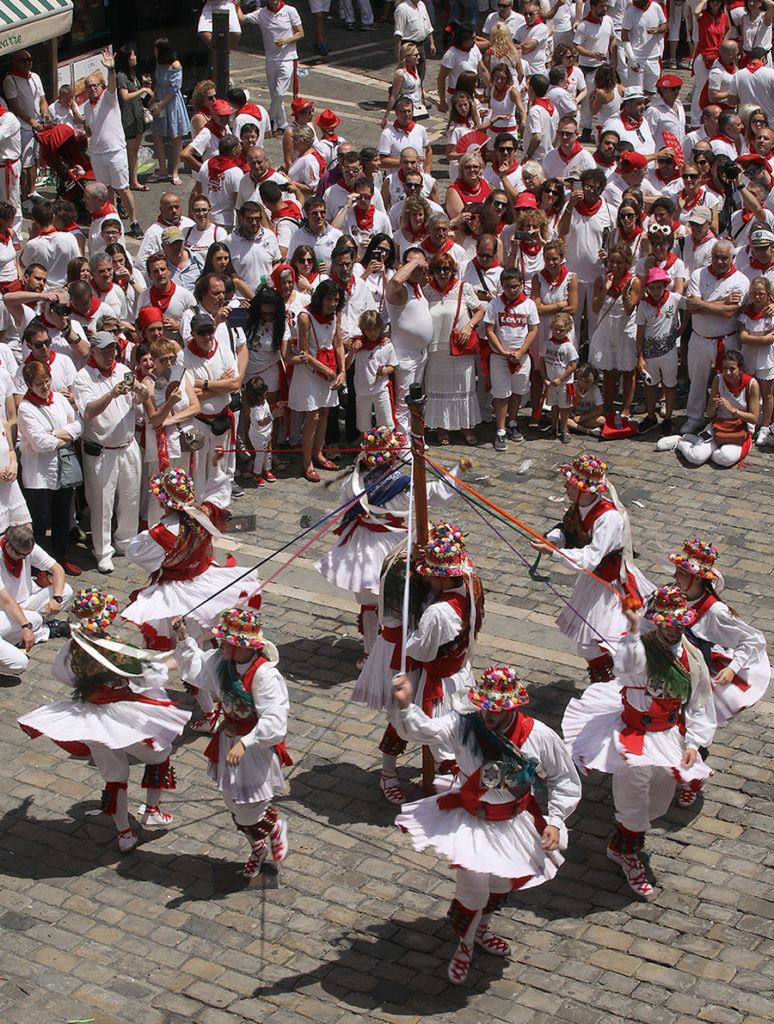
Fireworks
An international contest and one of the most watched events during the Sanfermines.
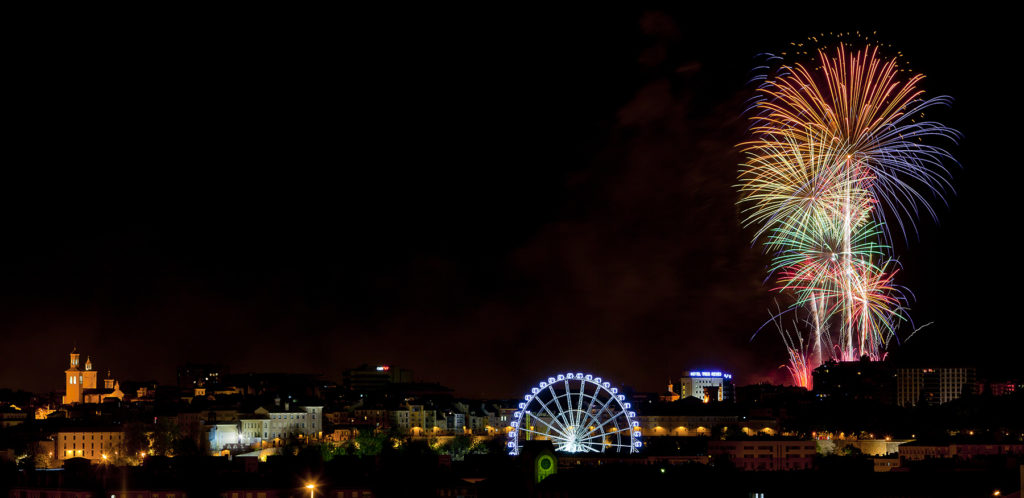
The tradition of firework displays during the fiestas of San Fermin goes back to the 17th century.
Every day during the fiestas at 23:00 the people of the city go to the lawns at the Vuelta del Castillo, a large green space that surrounds the Ciudadela, to marvel a the fireworks that are launched from 6th to 14th July.

